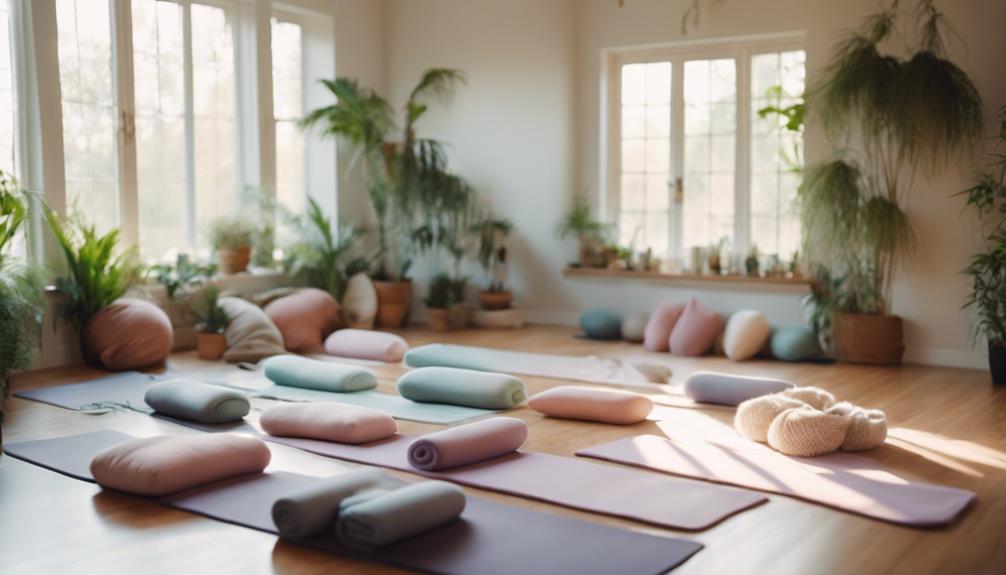What Is Sup Yoga

Stand-Up Paddleboarding (SUP) has taken the fitness world by storm, but when you combine it with yoga, you create a unique experience known as SUP Yoga. If you’re wondering, “What is SUP Yoga?” you’re in for an enlightening exploration of this innovative practice that merges the serenity of yoga with the tranquility of water. This guide will provide an in-depth understanding of SUP Yoga, its benefits, how to get started, and more.
Understanding SUP Yoga: A Fusion of Two Worlds
SUP Yoga is a fitness practice that combines traditional yoga with stand-up paddleboarding. Practitioners perform yoga poses while balancing on a paddleboard, usually in a calm body of water such as a lake, river, or ocean. This unique blend creates a dynamic environment that enhances the physical and mental aspects of yoga. The gentle rocking of the water offers a sense of tranquility, while the challenge of maintaining balance adds an exciting twist to familiar poses. SUP Yoga is suitable for all skill levels, from beginners to seasoned yogis, making it an inclusive experience that encourages everyone to connect with nature.
The Benefits of Practicing SUP Yoga
Engaging in SUP Yoga offers a myriad of benefits that extend beyond traditional yoga practices. Firstly, the unstable surface of the paddleboard engages core muscles, improving strength and stability. This increased engagement can lead to better posture and enhanced overall body awareness. Secondly, practicing yoga in nature has been shown to reduce stress and anxiety, as the calming presence of water and surrounding landscapes can significantly enhance mental well-being. Additionally, the rhythmic movement of paddling combined with yoga promotes better circulation and cardiovascular health. The fusion of physical exercise and mindfulness makes SUP Yoga an excellent choice for holistic health.
How to Get Started with SUP Yoga
If you’re intrigued by the idea of SUP Yoga, getting started is easier than you might think. First, ensure you have access to a stand-up paddleboard and the necessary safety equipment, including a life jacket. Many local yoga studios and outdoor centers offer SUP Yoga classes, making it a great way to learn the basics under professional guidance. It’s advisable to start with a lesson that focuses on paddleboarding techniques before transitioning into yoga poses. Once you’re comfortable on the board, you can join a SUP Yoga class or practice on your own. Remember to check weather conditions and choose calm waters for your practice to ensure safety.
Related Posts:
Essential Gear for SUP Yoga Practitioners
To make the most out of your SUP Yoga experience, having the right gear is crucial. A stable, wide paddleboard designed for yoga can provide the necessary balance and support. Look for a board with a non-slip surface to enhance grip during poses. Additionally, consider investing in a paddle that feels comfortable in your hands, as this will improve your paddling experience. Wear appropriate attire, such as a swimsuit or quick-dry clothing, that allows for ease of movement. Don’t forget to bring a leash for your board and apply sunscreen to protect your skin from UV rays while practicing outdoors.
Common Yoga Poses for SUP Yoga
Once you’re ready to hit the water, it’s important to know which yoga poses are best suited for SUP Yoga. Start with foundational poses like Downward-Facing Dog, Warrior II, and Tree Pose, which can help build confidence and stability on the board. As you become more comfortable, you can experiment with more challenging poses such as Crow Pose or Pigeon Pose. Remember to focus on your breath and maintain a connection with nature as you flow through your practice. Even simple stretches can be incredibly effective when performed on a paddleboard, as they engage your core and enhance balance.
Safety Tips for Practicing SUP Yoga
Safety should always be a priority when engaging in SUP Yoga. Before setting out, check the weather conditions and water currents to ensure a safe environment. Always wear a life jacket, especially if you’re a beginner, and make sure to practice in calm waters. It’s also wise to inform someone of your plans and bring a buddy along for added safety. If you find yourself losing balance and falling into the water, don’t panic. Falling is a natural part of the learning process in SUP Yoga, and most importantly, it’s a chance to embrace the aquatic environment. Practice falling safely by leaning away from your paddleboard and keeping your body relaxed.
Finding Community Through SUP Yoga
One of the most rewarding aspects of SUP Yoga is the sense of community that often develops among practitioners. Many cities and towns have established SUP Yoga groups or classes, providing a wonderful opportunity to meet like-minded individuals who share a passion for fitness and nature. Participating in group classes can enhance your experience, as you can learn from instructors and benefit from the support of fellow yogis. Additionally, many communities host SUP Yoga events, workshops, and retreats, allowing you to deepen your practice while forming lasting connections with others.
Conclusion: Embrace the Joy of SUP Yoga
In conclusion, SUP Yoga is an invigorating practice that merges the mindfulness of yoga with the beauty of nature. By understanding what SUP Yoga is and exploring its numerous benefits, getting started, and ensuring safety, you can embark on a fulfilling journey that enhances both your physical and mental well-being. Whether you are a seasoned yogi or a curious beginner, SUP Yoga offers a unique opportunity to connect with yourself and the natural world around you. So grab your paddleboard, find a serene body of water, and embrace the joy of SUP Yoga today!How To Pick Yoga MatWhat Is Ashtanga Vinyasa Yoga